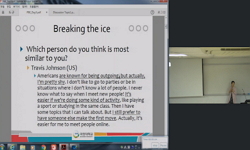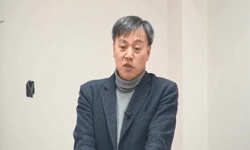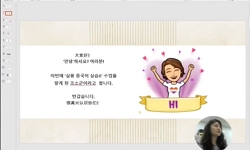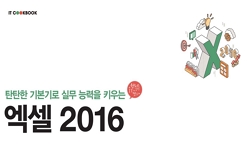This paper attempts to understand the response and changes of Confucianism in the transition period by examining the trends and change of the implications of the discourse on ‘Sil(實, being practical, true)’ in the late Joseon Era. The study of ...
http://chineseinput.net/에서 pinyin(병음)방식으로 중국어를 변환할 수 있습니다.
변환된 중국어를 복사하여 사용하시면 됩니다.
- 中文 을 입력하시려면 zhongwen을 입력하시고 space를누르시면됩니다.
- 北京 을 입력하시려면 beijing을 입력하시고 space를 누르시면 됩니다.

조선 후기 ‘실(實)’ 담론에 나타난 유교 패러다임의 변화 = Paradigm shift of Confucianism in the Discourse on ‘Sil(實)’ in the Late Joseon Era - Focusing on The Trends and change of the implications of the discourse on ‘Sil’(實)
한글로보기부가정보
다국어 초록 (Multilingual Abstract)
This paper attempts to understand the response and changes of Confucianism in the transition period by examining the trends and change of the implications of the discourse on ‘Sil(實, being practical, true)’ in the late Joseon Era. The study of ‘Sil’ discourse in the late Joseon era involves the reexamination of Jeong In-bo, one of the most important late Joseon scholars in Silhak studies’ emphasis of Silhak (實學, practical learning, true learning) as a Sil-oriented academic tradition, as well as the expansion of the recent studies about Silhak-related conceptual history. The changes in ‘Sil’ discourse can be detected, primarily, by a quantitative analysis, that is, by analyzing the frequency of the use of ‘Sil’-related terms. In this paper, for example, Silhak, Silsim(實心), Silsa(實事), Silyong(實用), Sili(實理), Silhaeng(實行), Silduk(實德), Sileong(實政) and Silup(實業) were considered as the key word of ‘Sil’ discourse, and the frequency of their use and appearance in both the national records, including The Annals of the Joseon Dynasty, Records of the Royal Secretariat, and private literature were examined. After the reign of king Sukjong, the use of terms, Silsim, Silsa, Silyong, Silhyo, and Silup were significantly increased in the national archives and their meaning was changed according to the time. The low frequency of the words indicates that Silhak was not distinguished from the Scholar of Confucian Classics, or Neo-Confucianism, but taken as a general idea in the mainstream discourse until the end of king Gojong. Another important finding in the quantitative analysis of the national archives was that it is necessary to cross-check the use of those terms and words because they were used, interchangeably. This phenomenon was found in private literature, too. With private literature, this paper sorted out the people who had mostly suggested the ‘Sil’ discussion according to their school and time period, and then compared the frequency of the ‘Sil’ discourse in their writings. As a result, this study has found that the weight of ‘Sil’ discourse which used to be discussed most frequently was similar throughout the schools and the time period. The Toegye(退溪) and Yulgok(栗谷) Eclectics and the Ugye(牛溪) School emphasized Silsim and Silsa, while Seongho(星湖) and Bukhak(北學) Schools, respectively, focused on Silsim and Sili, and Toegye and Yulgok Schools, respectively, focused on Silsim and Sili. The emphasis on Sili was particularly noticeable in the late Toegye and Yulgok Schools, along with the terms Jeonghak(正學) and Sahak(邪學). It signifies that, despite the differences in their academic position, they all felt the pressing need to establish a theory to respond to the same object, the western materialism. The changes in the ‘Sil’ discourse in the late Joseon era appeared with the re-interpretation of its subordinate concepts, such as Silsagusi(實事求是) and Jeongduk-liyong-husaeng(正德利用厚生), as the need to defend or re-establish Dohak(道學) or Jeonghak(正學), the general ideas of the time, arose. The changes in the ‘Sil’ discourse in the late Joseon era reflected the shift of Confucianism paradigm in the transitional period.
국문 초록 (Abstract)
본 논고는 조선 후기 ‘실’ 담론의 추이와 함의 변화를 검토함으로써 전환기 유교 사상의 대응과 변화를 고찰하는 것을 목표로 한다. 조선 후기 ‘실’ 담론 연구는 ‘실학’을 하나의 학...
본 논고는 조선 후기 ‘실’ 담론의 추이와 함의 변화를 검토함으로써 전환기 유교 사상의 대응과 변화를 고찰하는 것을 목표로 한다. 조선 후기 ‘실’ 담론 연구는 ‘실학’을 하나의 학술 사조로 이해하는 데 지대한 영향을 미친 근대의 실학 규정 내용을 재검토하고, 최근 실학 관련 개념사 연구를 발전적으로 확장시키는 의미를 지닌다. ‘실’ 담론의 변화양상은 일차적으로 정량적 분석, 즉 ‘실(實)’과 관련된 용어 사용 빈도의 분석으로 확인할 수 있다.
본 논고에서는 실학(實學), 실심(實心), 실사(實事), 실용(實用), 실리(實理), 실행(實行), 실덕(實德), 실정(實政), 실효(實效), 실업(實業)을 ‘실’ 담론의 주제어로 보고, 이 용어들이 국가기록 -조선왕조실록, 승정원일기, 일성록- 과 개인 문집에 사용된 빈도를 검토하였다. 숙종 대 이후 국가기록에서는 실심, 실사, 실용, 실리, 실효, 실업의 사용 빈도가 눈에 띄게 증가했고, 이들은 시대 상황에 따라 의미 변화를 보였다. 이때 다른 용어에 비해 실학의 사용 빈도가 낮은 것은, 고종 연간에도 보수적인 주류 담론 내에서는 실학이 보편개념으로서 경학, 성리학의 의미로 사용되었음을 나타낸다. 그러나 순종 연간 기록에서는 신학(新學)과 연동된 실학 개념의 변화를 확인할 수 있었다. 국가기록에 나타난 ‘실’ 담론의 분석과정에서 확인한 또 하나 중요한 사실은, 각 개념의 용례가 상호 연동되기 때문에 교차 검토가 필요하다는 것이다. 이는 개인 문집에서도 마찬가지였다.
개인 문집에서는 ‘실’ 담론을 주로 제기한 인물들을 학파별 ‧ 시대별로 배열하고, 각 저술 내 ‘실’ 담론의 사용 빈도를 비교하였다. 그 결과 학파나 시대에 따라 주로 논의한 ‘실’ 담론의 비중이 비슷한 형태로 나타난 것을 알 수 있었다. 퇴‧율 절충파나 우계 계열은 실심(實心)과 실사(實事)를, 성호학파와 북학파는 실사(實事)와 실용(實用)을, 퇴계학파와 율곡학파는 실심(實心)과 실리(實理)를 중시한 것이다. 특히 실리(實理)의 중시는 정학(正學)이나 사학(邪學)이라는 용어 사용과 함께 후기 퇴계학파와 후기 율곡학파에서 두드러지게 나타났다. 이는 이들이 학파 간 차이에도 불구하고 동일한 대상-서구의 물질문명-에 대응하는 논리를 구축할 필요성에 절감했음을 드러낸다.
조선 후기 ‘실’ 담론의 변화는 당대 보편이념인 도학(道學)이나 정학(正學)의 ‘수호’ 혹은 ‘재정립’의 필요에 따라, 실사구시(實事求是), 정덕이용후생(正德利用厚生)과 같은 그 하위개념의 재해석과 함께 나타났다. 이는 전환기 유교 패러다임의 변화를 반영하며, 실학을 실(實) 중시의 학풍 으로 본 관점이 단순히 자의적인 설정은 아니라는 사실을 보여준다.
1 최영성, "한국유교통사" 심산 2006
2 조성을, "한국사상사입문" 서문문화사 2006
3 "한국고전번역원 고전종합DB"
4 정호훈, "한국 근·현대 실학연구의 추이와 문제의식" 연세대학교 강진다산실학연구원 2 : 2009
5 박상섭, "한국 개념사 연구의 과제와 문제점" 한림과학원 (4) : 239-264, 2009
6 지두환, "조선후기 실학연구의 문제점과 방향" 태동고전연구소 3 : 1987
7 조성을, "조선주자학과 조선실학-그 연속과 단절" 7 : 2014
8 최영성, "조선 중⋅후기 四大學派의 철학과 현실인식― 차이와 소통을 중심으로 ―" 한국철학사연구회 (33) : 67-114, 2012
9 이경구, "조선 시대 실학 용법에 대한 거시적 일고찰" 한림과학원 (26) : 111-133, 2020
10 박홍식, "일제강점기 정인보鄭寅普·안재홍安在鴻·최익한崔益翰의 다산茶山 연구" 재단법인다산학술문화재단 (17) : 45-93, 2010
1 최영성, "한국유교통사" 심산 2006
2 조성을, "한국사상사입문" 서문문화사 2006
3 "한국고전번역원 고전종합DB"
4 정호훈, "한국 근·현대 실학연구의 추이와 문제의식" 연세대학교 강진다산실학연구원 2 : 2009
5 박상섭, "한국 개념사 연구의 과제와 문제점" 한림과학원 (4) : 239-264, 2009
6 지두환, "조선후기 실학연구의 문제점과 방향" 태동고전연구소 3 : 1987
7 조성을, "조선주자학과 조선실학-그 연속과 단절" 7 : 2014
8 최영성, "조선 중⋅후기 四大學派의 철학과 현실인식― 차이와 소통을 중심으로 ―" 한국철학사연구회 (33) : 67-114, 2012
9 이경구, "조선 시대 실학 용법에 대한 거시적 일고찰" 한림과학원 (26) : 111-133, 2020
10 박홍식, "일제강점기 정인보鄭寅普·안재홍安在鴻·최익한崔益翰의 다산茶山 연구" 재단법인다산학술문화재단 (17) : 45-93, 2010
11 이봉규, "유교적 질서의 재생산으로서 실학" 한국철학회 65 : 2000
12 이우성, "실학연구입문" 일조각 1973
13 안재순, "실학개념논쟁과 이을호의 실학관" 한국공자학회 (19) : 257-285, 2010
14 노관범, "대한제국기 실학 개념의 역사적 이해" 한국실학학회 (25) : 417-462, 2013
15 유봉학, "다시, 실학이란 무엇인가?" 푸른역사 2007
16 "국사편찬위원회 한국사데이터베이스"
17 이경구, "개념사와 내재적 발전: ‘실학’ 개념을 중심으로" 역사학회 (213) : 49-70, 2012
18 김치완, "鄭寅普의 茶山-實學 이해에 대한 비판적 검토" 역사실학회 (50) : 75-98, 2013
19 이헌창, "實學 개념들의 통합적 이해를 위한 試論" 한국실학학회 (32) : 233-296, 2016
20 강명관, "京華世族과 實學" 한국실학학회 (32) : 297-315, 2016
21 천관우, "『한국문화사대계』권6" 고려대민족문화연구소 1985
22 이영호, "‘내재적 발전론’ 역사인식의 궤적과 전망" 한국사연구회 (152) : 239-272, 2011
23 이봉규, "21세기 실학연구의 문법" 혜안 1 : 2006
24 김윤경, "19세기 조선성리학계의 양명학 비판 양상 —李震相과 田愚의 陽明學 비판 비교를 중심으로—" 동양철학연구회 (92) : 71-103, 2017
25 이경구, "19세기 말∼20세기 초 한·중·일 삼국의 실학 개념" 한림과학원 (15) : 83-108, 2015
26 신규수, "1906년(丙午) 호남지역 의병투쟁 연구" 국제문화학회 (33) : 2004
동일학술지(권/호) 다른 논문
-
오우(吳虞)의 반공비유(反孔非儒) 사상이 지닌 득실 분석
- 한국철학사연구회
- 이진명
- 2022
- KCI등재
-
성호학파 격물관(格物觀)을 통해 본 격물궁리(格物窮理) 전통의 변동
- 한국철학사연구회
- 이원준
- 2022
- KCI등재
-
- 한국철학사연구회
- 이천승
- 2022
- KCI등재
-
충청 유학의 교육 사상 형성 과정 고찰: 사계와 우암을 중심으로
- 한국철학사연구회
- 강보승
- 2022
- KCI등재





 KCI
KCI KISS
KISS







